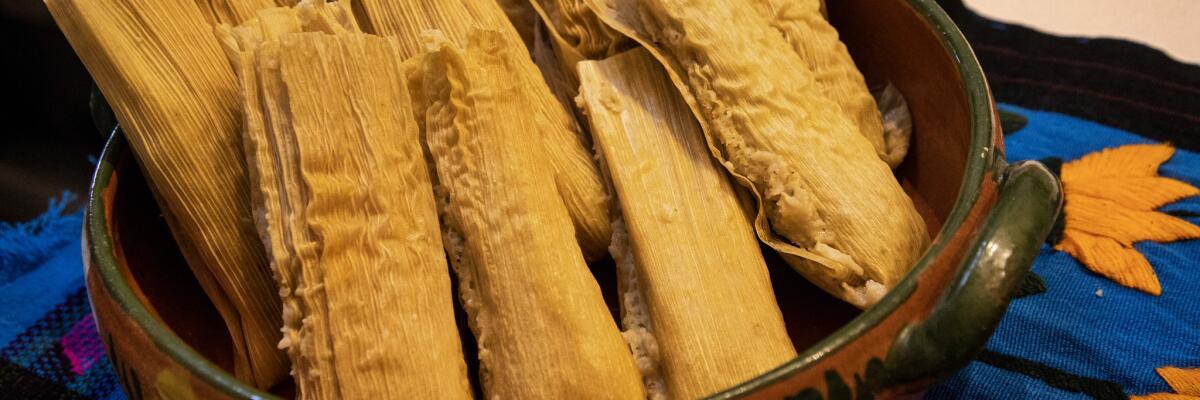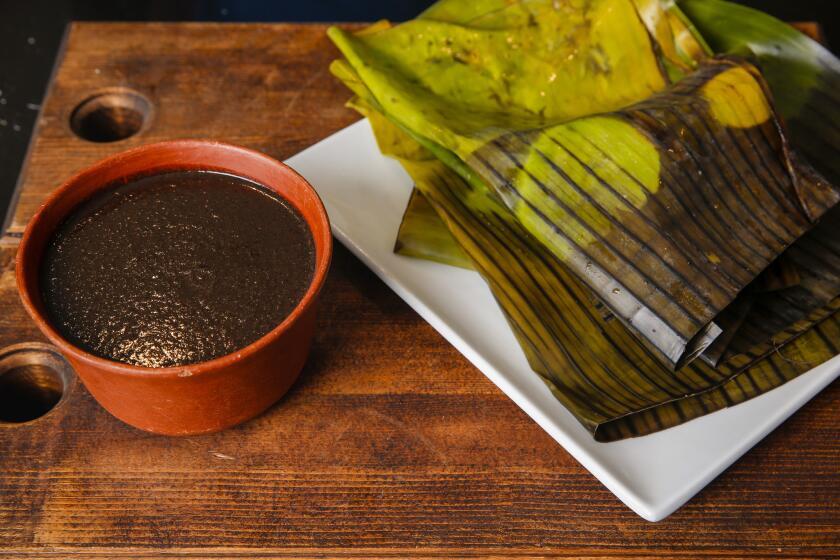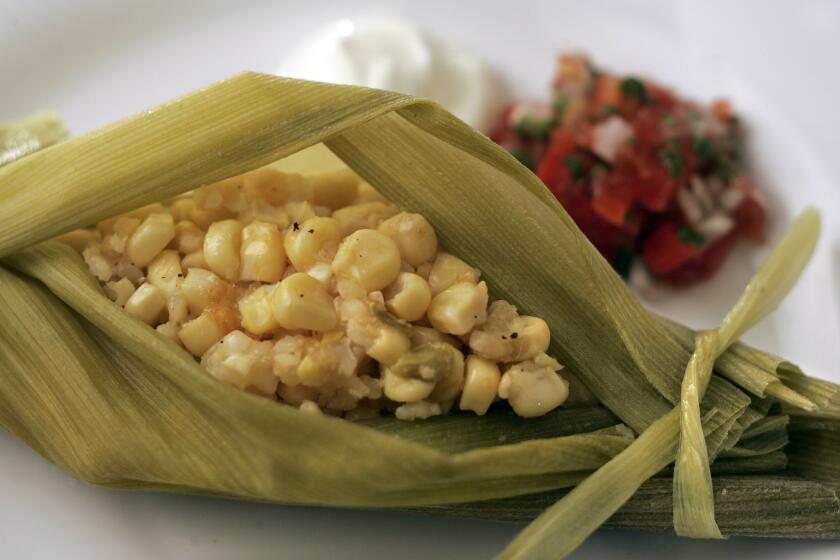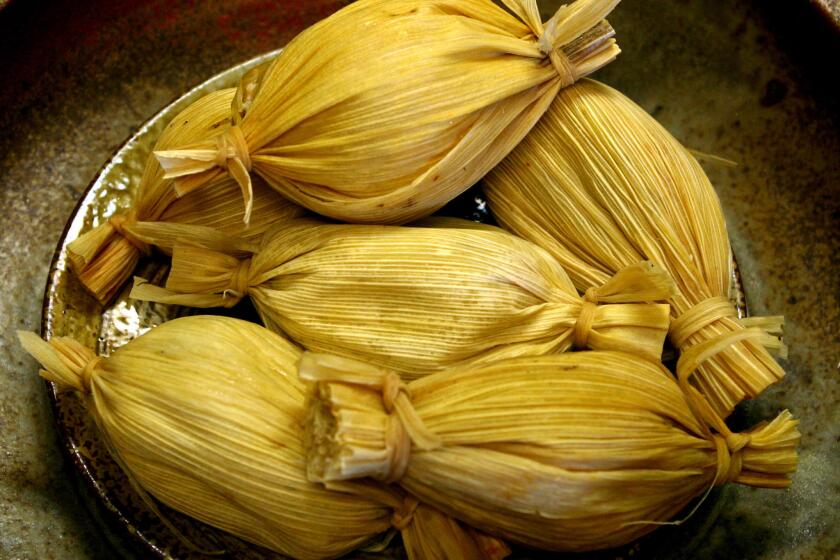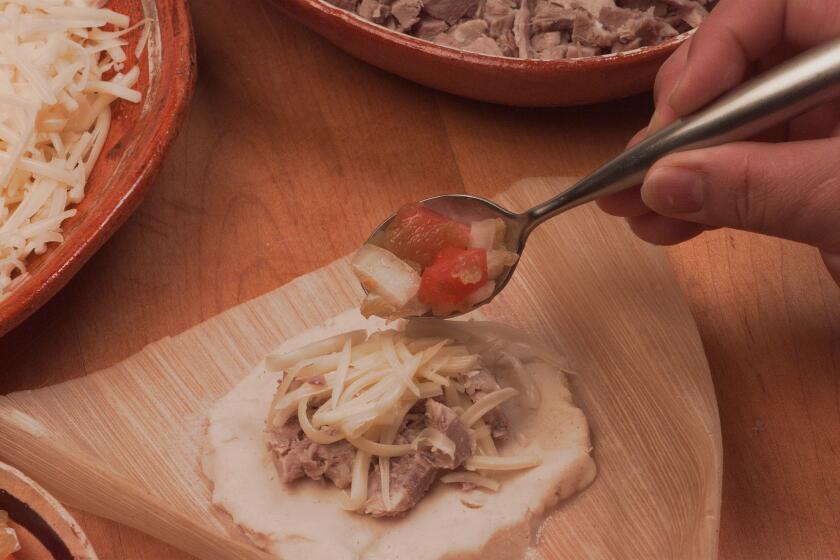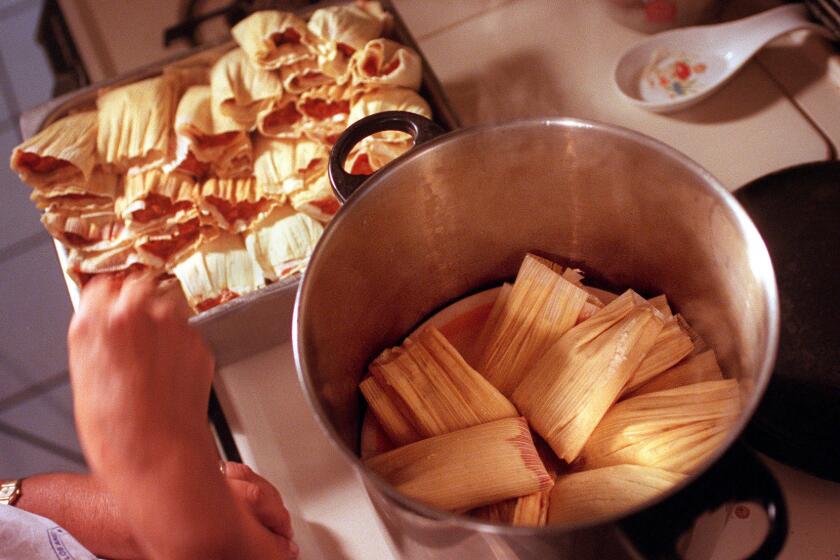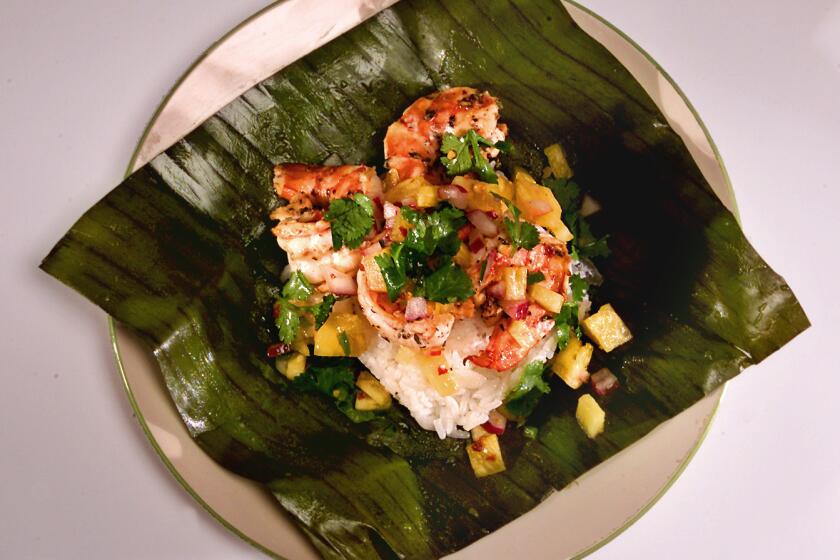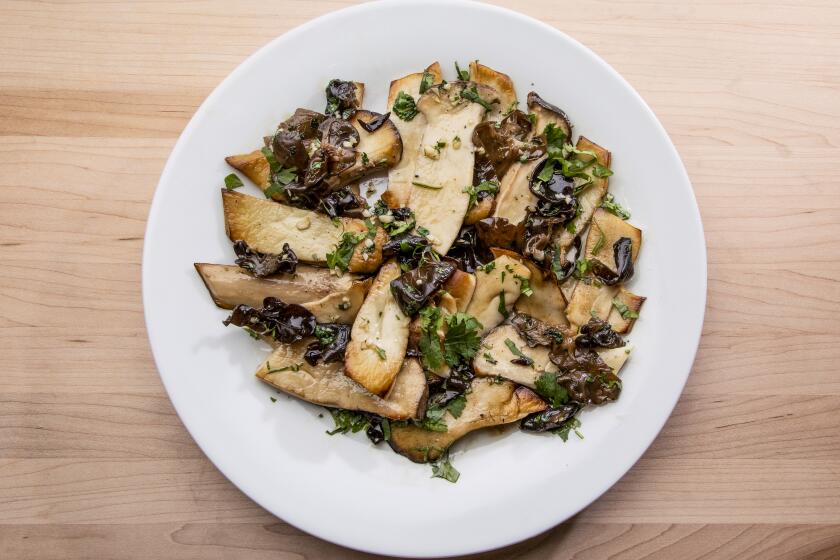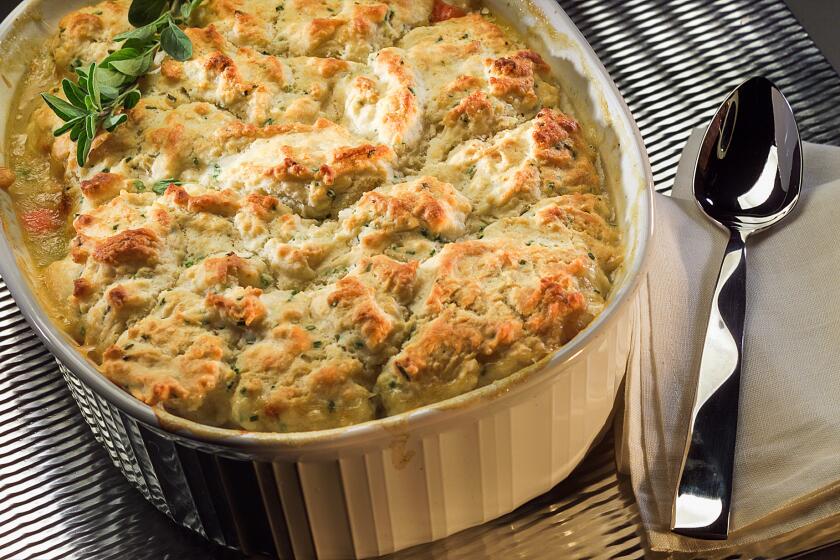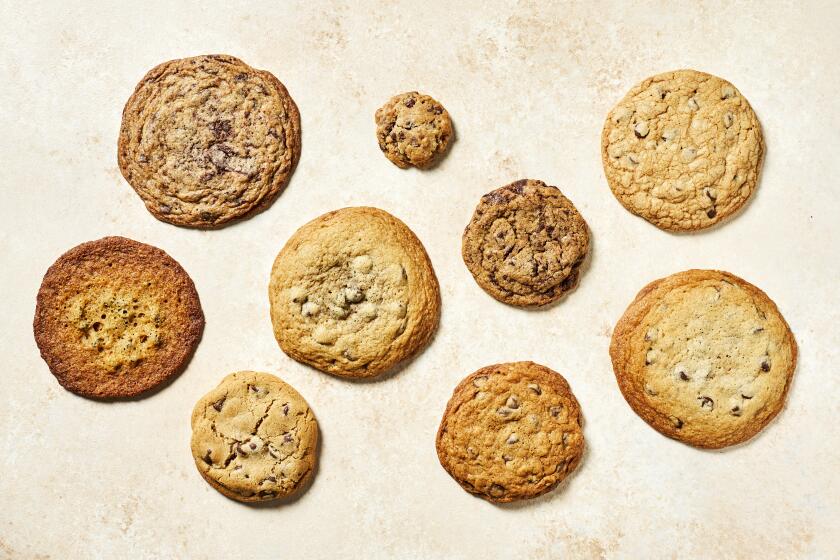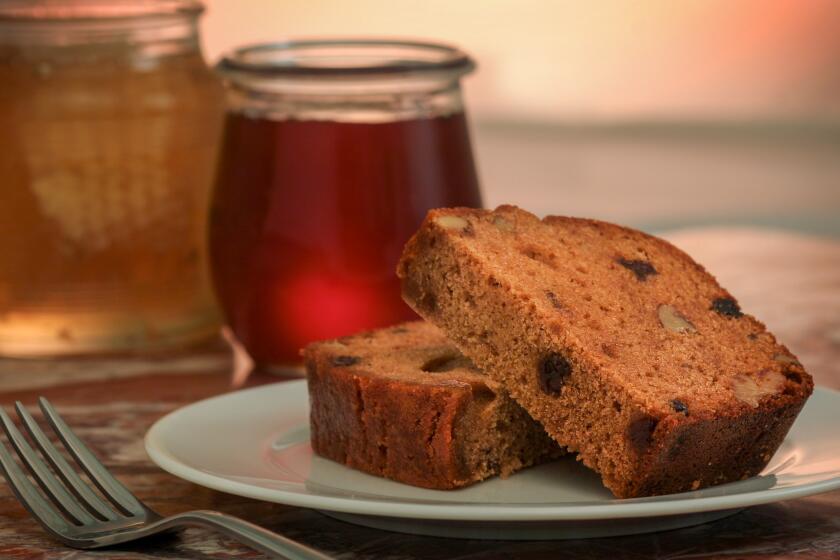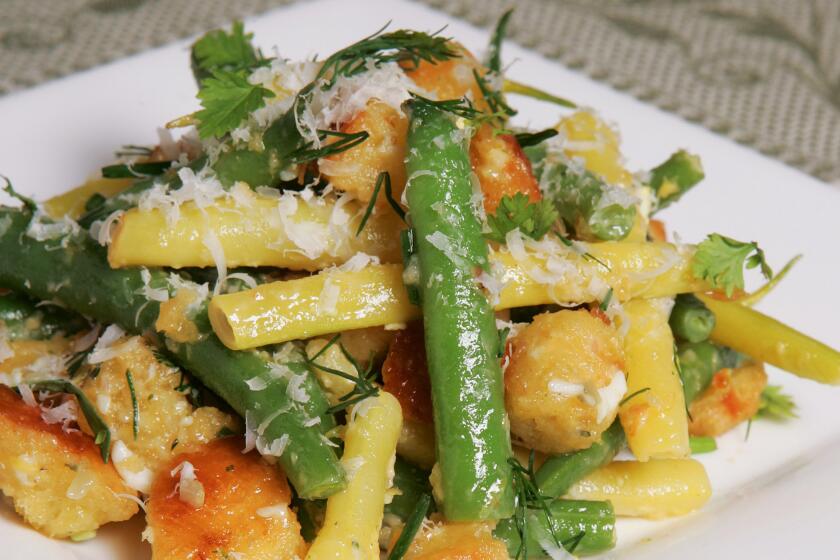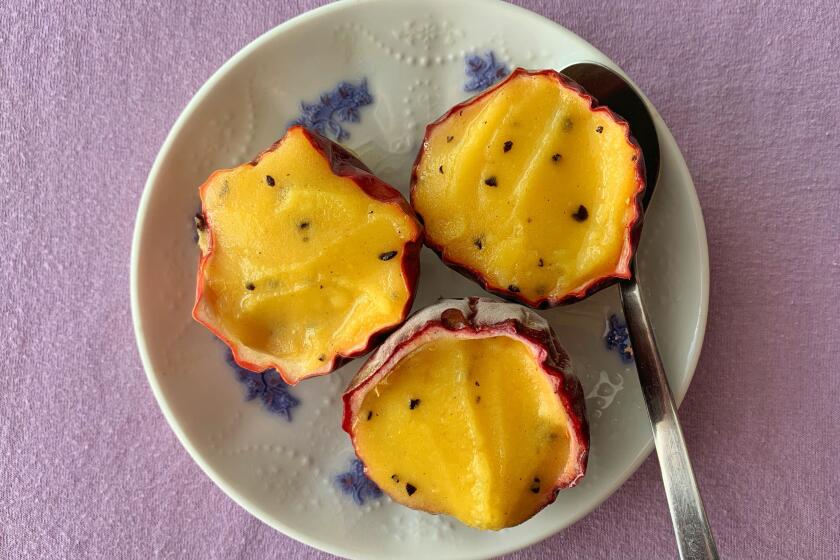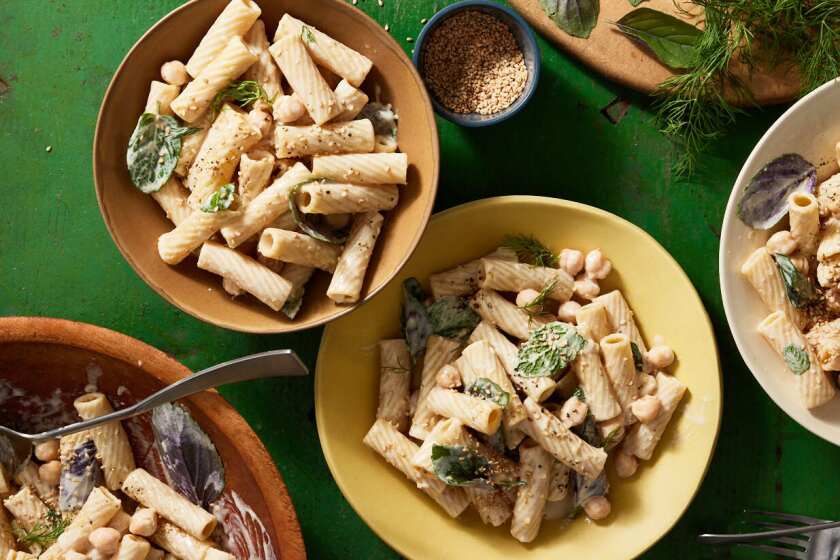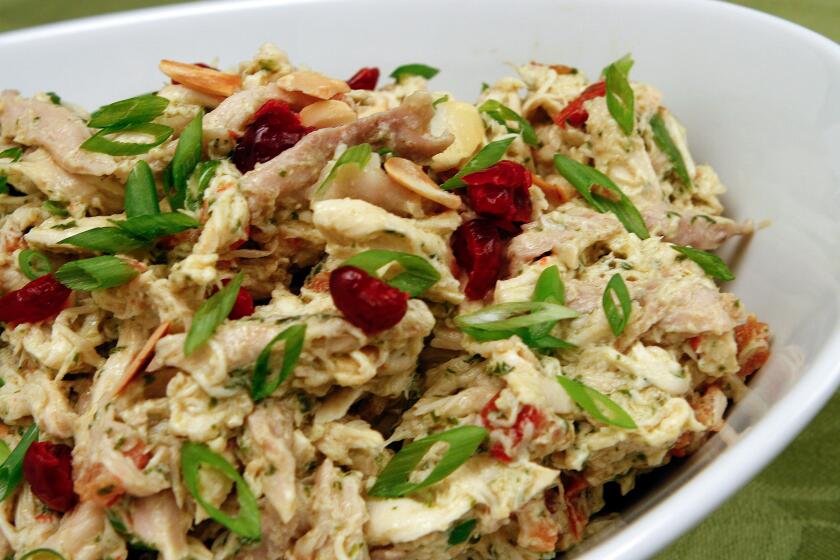Julie Giuffrida is the former Test Kitchen coordinator for the Los Angeles Times.
This year’s tamalada, or tamale-making party, may be just you and others in your bubble, but here’s how to get the assembly line going.
- Share via
In Mexico and Central America, and for many Mexican American families, Christmastime means tamale time. From the Feast of Our Lady of Guadalupe on Dec. 12 through Three Kings’ Day on Jan. 6, tamales are a culinary requirement.
One of the earliest portable foods, tamales have been a staple in Mesoamerica since long before the common era. The Mayas ate them. The Aztecs ate them. There is even evidence that the Inca of South America ate them. Before the Mayas and the Aztecs, the Olmecs and the Toltecs took them on their travels, hunting expeditions and military endeavors.
How did tamales come to be associated with Christmas? In Mesoamerica, from whence they hail, corn was viewed as the precious substance of life. It was believed that the gods made humans from corn. Wrapped tamales were part of ritual offerings. After the conquistadors arrived and banned human sacrifice, little bundles of corn — tamales — were “sacrificed” instead.
Perhaps more sacred than the corn offerings themselves was the ritual of tamale making. Talamadas, or tamale-making parties, were illustrated in the hieroglyphics of the Toltecs and Olmecs. To this day they are a vital component of the celebrations surrounding sacred occasions such as baptisms, first communions, special wedding anniversaries and, of course, Christmas.
The name “tamal” derives from the primary language spoken at the height of the Aztec civilization in central Mexico. Different styles of tamales are like regional “postmarks” indicating origins from central Mexico extending south to Argentina. Common to all is masa (corn dough), a wrapper (a corn husk or banana leaf) and the cooking method (steam).
In this pandemic holiday season, it may be difficult to find a tamalada. But given the stay-at-home orders, you can create your own tamalada with your family in your kitchen. (What else are you going to do?) Try one of the tamale recipes below, gather your loved ones, set up an assembly line and spend an afternoon making bundles of deliciousness.
Wes Avila's Early Christmas tamales
Time 2 hours 30 minutes
Yields Makes about 20 tamales
Mole tamales
Time 2 hours
Yields Makes about 20 tamales.
Green corn tamales
Time 2 hours
Yields Makes 12 tamales
Red pork chili tamales
Time Total time: 4 1/2 to 5 hours, including simmering and steaming time
Yields Makes 4 to 5 dozen
Tamale pie casserole
Time 1 hour 15 minutes
Yields Serves 8
Tamales de puerco y queso (Pork and cheese tamales)
Time Active work time: 1 1/2 hours
Total preparation time: 4 1/2 hours
Yields Makes 40 tamales
Tamales de res y mole (Beef and mole tamales)
Time Active work time: 1 1/2 hours
Total preparation time: 4 1/2 hours
Yields Makes 40 tamales
Backyard Barbecue Shrimp Tamales With Pineapple Pico de Gallo
Time 2 hours
Yields Serves 6

